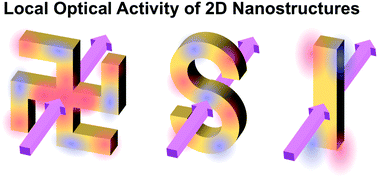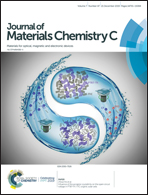Local optical activity of nano- to microscale materials and plasmons
Abstract
Chirality is a broad concept that characterizes structures of systems in almost all hierarchies of materials. From the viewpoint of developing novel functionality of nanomaterials, it is of fundamental importance to investigate spatial features and local chiral optical responses to design chiral functions of nano- and microscale materials. In this article, we review the development of microscopic optical activity imaging methods (far-field and near-field optical imaging methods and photoemission electron microscopy) and their applications, with the major focus on local chiral optical characteristics under resonance with surface plasmons in metal nanostructures. We show that strong local optical activity was observed at the peripheries of the plasmonic materials, which suggested the existence of strongly twisted local electromagnetic fields. The strong local optical activity was found even in achiral metal nanostructures, which indicates that the selection rule of the local optical activity must be modified from that of the macroscopic optical activity. A few topics recently reported on the unique chiral characteristics of plasmons arising from the interaction between molecular materials and locally enhanced chiral optical fields on metal nanostructures are overviewed. Regarding the enhanced optical activity of biomolecules (proteins) with plasmon polarimetry, the signal sensitivity was improved by ≈6 orders of magnitude compared to that of conventional optical activity spectrometry. For the generation of circularly polarized luminescence, we obtained a dissymmetry factor exceeding g = 0.1 for chiral-plasmon-aided fluorescence from achiral organic dye molecules. Regarding the chiral crystal nucleation of achiral NaClO3 molecules, serious chiral bias was reported for photo-induced crystal nucleation initiated by illumination with circularly polarized light in the presence of noble metal nanoparticle aggregates, which is an example of chiral induction by circularly polarized light. As another example of chiral induction by light, chiral nanostructure formation with achiral plasmonic nanoparticles under circularly polarized light illumination is summarized. The basic research on local chiral optical fields at the nanoscale and relevant chiral plasmon–molecule interaction phenomena may have the potential to pioneer novel molecular-level chiral functions and provide the basis for research in broad fields of science and technology.

- This article is part of the themed collection: Recent Review Articles


 Please wait while we load your content...
Please wait while we load your content...